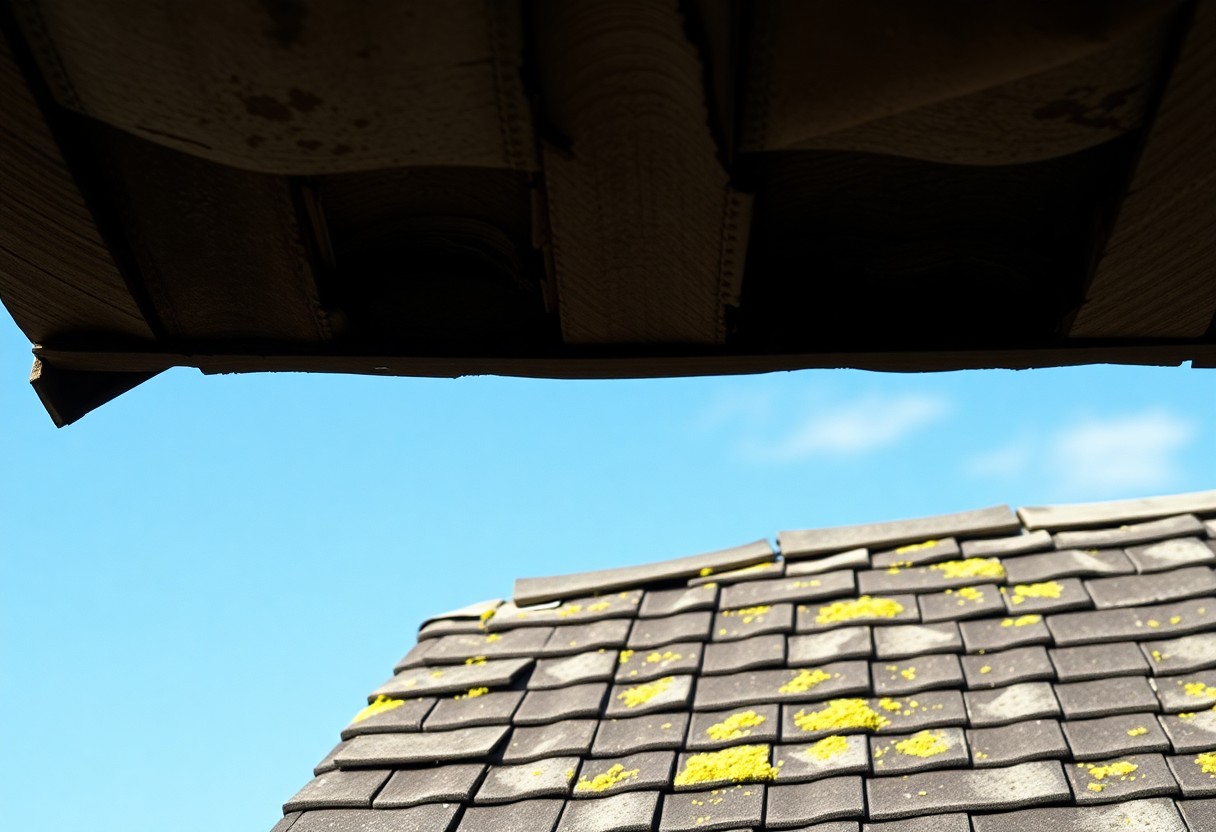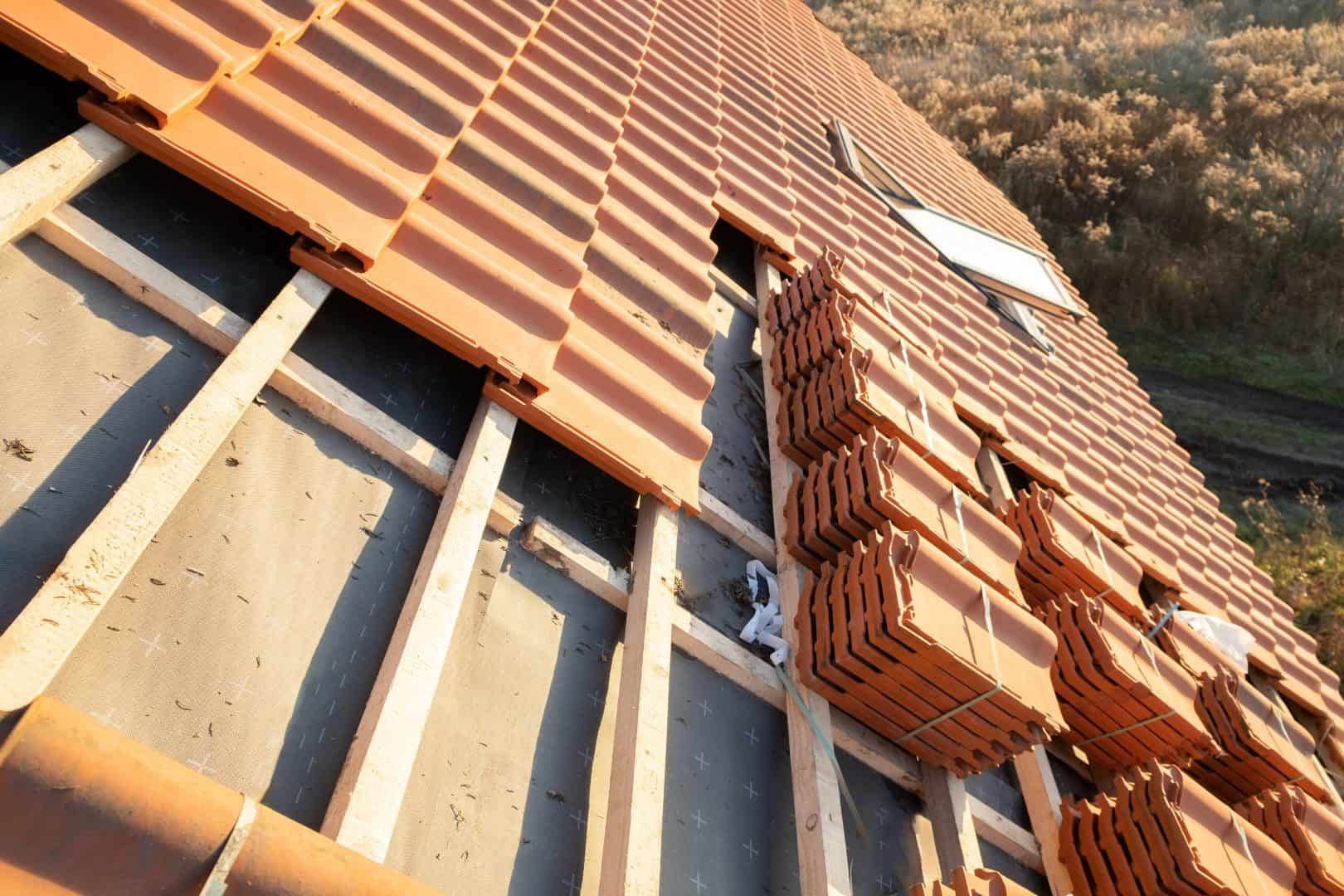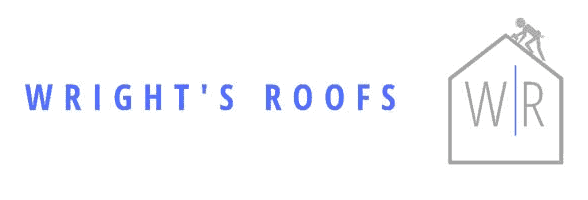What are the signs that I need a new roof?
Fill Out The Form And We'll Get Back To You

Roof deterioration can lead to significant problems if not addressed promptly. You might notice signs that indicate it’s time to consider a replacement, such as missing or damaged shingles, leaks in your ceiling, or excessive granules in your gutters. Additionally, if your roof is nearing the end of its expected lifespan or you see sagging areas, these are clear indicators that your roof needs attention. Understanding these signs will help you make informed decisions about the upkeep of your home.
Key Takeaways:
- Visible Damage: Look for missing or broken tiles, curled edges, or sagging sections, indicating potential roofing issues.
- Leaks: Water stains on ceilings or walls can signify underlying roof problems that may require a replacement.
- Age of Roof: If your roof is over 20 years old, it may be time to consider a replacement, even if it appears to be in good condition.
Common Signs of Roof Damage
To determine if your roof requires attention, it is important to be aware of common signs of damage. Regular inspections can reveal problems before they escalate, saving you time and money. Watch for visible wear and tear, unusual noises, and indoor indicators that suggest roofing issues may be present.
Missing or Damaged Shingles
Below are frequent indicators of missing or damaged shingles. Check your roof for any loose or missing shingles, as this can leave your home susceptible to water infiltration. Dark patches may also signify areas where shingles are curling or cracking, which requires prompt action to avoid further complications.
Leaks and Water Stains
Damaged roofs often lead to leaks and water stains, which can result in significant interior damage if left unaddressed. You might notice discoloured patches on your ceilings or walls, which indicate that moisture is seeping through your roof.
Consequently, it is important to investigate these leaks promptly. Water stains can escalate to mould growth, posing health risks to you and your family. Furthermore, the structural integrity of your home may be compromised if roofing issues are not resolved quickly. Being proactive can prevent costly repairs in the long run and ensure a safe living environment.
Age of the Roof
Clearly, the age of your roof plays a significant role in determining whether it needs replacement. Roofs typically have lifespans ranging from 15 to 50 years, depending on the materials used and the quality of installation. If your roof is approaching the end of its expected lifespan, it’s wise to assess its condition more closely and consider the possibility of a new roof before issues escalate.
Lifespan of Roofing Materials
The lifespan of roofing materials varies significantly, with asphalt shingles lasting around 15 to 30 years, while options like slate or metal can endure for 50 years or more. Understanding the specific material used in your roof helps you gauge when a replacement may be necessary, ensuring that you maintain the protection your home requires.
Effects of Weather and Environment
Beside age, the effects of weather and your local environment can adversely impact your roof’s health. Factors such as heavy rainfall, snow, strong winds, and intense sunlight can significantly wear down the materials, leading to potential leaks or damage. Understanding these influences will help you monitor your roof’s condition over time.
Further, locations with extreme weather conditions, like coastal areas prone to saltwater exposure or regions experiencing heavy snowfall, can accelerate the deterioration of roofing materials. Regular inspections following severe weather events are crucial to identify any emerging issues early. Keeping an eye on the roofing system will help you mitigate costly repairs and extend your roof’s lifespan.
Internal Indications of Roof Issues
After noticing various signs inside your home, it’s vital to determine if your roof might be failing. Internal indications can often point to underlying problems, such as water damage or structural weaknesses, which require immediate attention. Observing these signs early can save you from more extensive repairs and costly replacements further down the line.
Ceiling Cracks and Sagging
Around your home, if you find ceiling cracks or noticeable sagging, these can be significant red flags that your roof has issues. Cracks may indicate water leaking through, while sagging suggests that the roof’s structure is compromised. If left unchecked, both conditions can lead to more severe damage.
Mold and Mildew Growth
One of the more unsightly signs of roof issues is the growth of mould and mildew within your home. These fungi thrive in damp conditions, which may result from leaks or poor ventilation linked to your roof’s effectiveness.
This growth not only poses health risks but also indicates that water is infiltrating your living spaces. It’s important to tackle this issue promptly, as mould can spread quickly and may lead to further structural damage. Regular inspections can help you spot these problems early, allowing you to take appropriate action to protect your home and health.
External Signs of Wear
Many signs indicate that your roof may need replacement. Look for visible wear such as missing or damaged shingles, sagging areas, or cracks in tiles, which can all compromise your roof’s integrity. If you’re uncertain about what to look for, check out Hey folks, what are the common signs that suggest it’s time … for a new roof.
Algae and Moss Growth
By allowing algae and moss to thrive on your roof, you may inadvertently shorten its lifespan. These growths trap moisture and can lead to decaying shingles, obscuring any damage beneath. Regular cleaning and maintenance can prevent this issue, but persistent growth may indicate that your roof is vulnerable and could need replacement.
Curling or Buckling Shingles
Shingles deforming, whether they curl at the edges or buckle in the centre, is a significant indicator of wear. This damage can occur due to age, exposure to the elements, or poor installation. Taking action when you notice these signs can prevent further deterioration and costly repairs.
A roof with curling or buckling shingles not only looks unsightly but can also lead to leaks and structural damage. If you observe a noticeable pattern in the warping, it could mean that your shingles are nearing the end of their life. It’s advisable to consult a roofing professional to assess whether a replacement is needed.
Professional Inspection Recommendations
Unlike regular home maintenance tasks, roofing inspections often require the expertise of a professional. Engaging a skilled roofing contractor can provide you with an accurate assessment of your roof’s condition, as they are trained to identify issues that may not be visible to the untrained eye. By scheduling a professional inspection, you can ensure that any potential problems are addressed promptly, ultimately saving you time and money in the long run.
Importance of Regular Assessments
Around your home, your roof serves as the first line of defence against the elements, making regular assessments vital. These inspections help identify wear and tear, allowing you to address minor issues before they escalate into significant problems. By proactively evaluating your roof’s condition, you can extend its lifespan and maintain the value of your property.
When to Call a Roofing Expert
Before you attempt to assess your roof, you should have a clear idea of when to contact a roofing expert. If you notice signs such as leaks, sagging, or discolouration on your ceilings, it is advisable to seek professional help. Other indicators include missing or damaged shingles, granules in your gutters, or any visible wear on your roof’s surface.
Further, if your roof is nearing the end of its expected lifespan, typically around 20 to 25 years, it’s prudent to consult a roofing expert. They can provide guidance on the remaining life of your roof and recommend necessary repairs or replacement. Taking these steps ensures your home remains protected, and you can avoid costly surprises down the line.
Cost Considerations
Despite the potential for a new roof to be a substantial expense, it’s imperative to weigh the long-term benefits against the initial cost. A well-maintained and up-to-date roof can save you money in repairs and energy efficiency. If you’re questioning whether to invest in a new roof, consider [this insight](https://www.quora.com/My-roof-is-20-years-old-It-looks-perfectly-fine-with-no-signs-of-wear-and-tear-Should-I-get-a-new-roof-or-wait-until-I-notice-problems) regarding age and condition; “My roof is 20 years old. It looks perfectly fine with no signs …”.
Budgeting for a New Roof
On creating a budget for a new roof, start by assessing the total costs involved, including materials, labour, and potential additional repairs. Factor in your current financial situation, and make sure to account for unexpected expenses that may arise during the roofing process. This approach will help you establish a realistic spending plan that ensures you are well-prepared for the investment.
Financing Options Available
An array of financing options can help you manage the costs of a new roof more comfortably. You may find loans, credit lines, or payment plans tailored specifically for home improvements, allowing you to spread out payments over time. Evaluate the terms and conditions of each option to determine which best suits your financial circumstances.
Cost considerations are vital when exploring financing solutions for your new roof. Many lenders may offer home equity loans or personal loans designed for renovations. Additionally, some roofing companies provide financing plans that allow you to make manageable monthly payments instead of a lump sum upfront. Carefully compare interest rates and repayment periods to ensure you select the most advantageous option, making the overall investment more feasible.
Summing up
From above, you should be vigilant for several signs indicating that you need a new roof. These include missing or damaged shingles, significant leaks, or sagging areas that suggest structural compromise. Additionally, if you notice granules accumulating in your gutters or sunlight filtering through your roof boards, it may be time to consider a replacement. Regular inspections can help you stay ahead of potential issues, ensuring the safety and integrity of your home.
FAQ
Q: What are some common signs that indicate I might need a new roof?
A: There are several signs that could suggest your roof needs replacing. Look for missing, curled, or cracked shingles as these can compromise its integrity. Moreover, if you notice sagging in your roofline, it might indicate structural issues. Water stains on your ceilings or walls, both inside and outside your home, can also be a clear sign of leaks and underlying problems that might necessitate a new roof.
Q: How can I determine if my roof’s age is a factor in needing a replacement?
A: The lifespan of a roof depends on the materials used and the specific weather conditions it has endured. Typically, asphalt shingles last around 20-30 years, while metal roofing can last up to 50 years or more. If your roof is approaching or has exceeded its expected lifespan, it’s sensible to have it inspected, as it may be more prone to damage and therefore require replacement sooner rather than later.
Q: Are there specific seasonal conditions that might accelerate the need for a new roof?
A: Yes, certain seasonal conditions can impact your roof’s longevity. Heavy snowfall, severe storms, and high winds can lead to rapid deterioration, especially if your roof is already showing signs of wear. Continuous exposure to UV rays in sunny climates can also contribute to the breakdown of roofing materials. After particularly harsh weather, it’s advisable to perform a thorough inspection to identify any potential damage that may necessitate a new roof.
Re-Roofing of House
The guys made a fantastic job of replacing the roof recently. They were fast, relaible and efficient. The work was carried out in a double-quick time.
Fascias and Soffits
We employed Wrights Roofs to replace the fascias, soffits and gutters that had been on the house since it was new. They carefully removed and replaced it all. Really impressed.
New Roof
We had an extension built and Wrights came and put a new roof on. They were excellent, no fuss, great value for money. Thank you.
Roofs, Flat Roofs Chimneys and Solar Panels
If you need roof work on your home, please complete the form or call us today.

